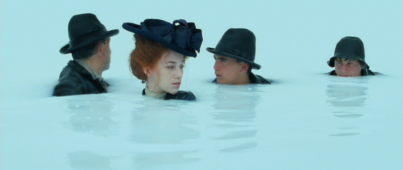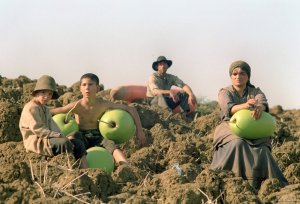The Trip is a 2010 film directed by Micheal Winterbottom, that follows Steve Coogan and Rob Brydon as they go on a road trip. The film’s strongest aspect is its script writing along with its visuals of various locations.
The Trip’s screenwriting and improvised production helps drive the narrative of the film forward by following the journey of these two people. In an interview with Winterbottom, he stated that the film’s script was roughly only “50 or 60 pages” that created the foundation for the film. He said that, “Broadly speaking, I wanted to show two people who are sharing a lot of experiences together with very different views of the world. “ These two characters often contrast with each other as the film progresses. Though one has a firm family life and the other is seeking to get back into a strong relationship with his girlfriend, they both share the desire to outdo the other in some way. This is most exemplified in the long restaurant scenes where the two characters partake in a humorous banter and actor impersonations. Since the film was digital, the actors could partake in long periods of improvised conversation. This helped add to the spontaneity of the humor and the realness of the characters.
The film’s humor is both referential and to a degree, almost highbrow. To understand many of the quick jokes and impression references, one has to have some knowledge of film. This is where The Trip excels because most of the film’s humor comes from these two characters desire to express more knowledge than the other. They are constantly feeding off of each others jokes while trying to impress the other person. In the background they have very different desires in life. Steve Coogan lives an unfulfilled life and his constant sarcastic remarks reveal that his character is insecure. Coogan is always trying to make himself laugh to counteract the depression he feels in regards to his dysfunctional love life. These traits make Coogan a well written and complex character. His dialogue is revealing without giving too much exposition. Additionally, Brydon acts as a foil to Coogan because of his stable family life. Coogan and Brydon are characters that an audience wants to follow and learn about which makes the The Trip very compelling film to watch. In the clip below, one can see the tension and humor build as Brydon and Coogan compete with their Micheal Caine impressions.
Another advantage that The Trip had in being a digital film is its constant change in location. Coogan and Brydon journey across a variety of landscapes and restaurants and this was made possible because of the ease of setting up and dissembling a digital camera equipment. The restaurants that the two characters visit provide an interesting location for the two characters to be in and interact at. Most of the time in the film, the characters are more interested in themselves than the food which is supposed to be the focus of Coogan’s job. This also adds to the film’s humor but on a more visual level. Often times Coogan will receive less appetizing food than Brydon, who usually orders scallops. This simple, reoccurring visual imagery adds to the film’s humor. Also, there are numerous scenes where Coogan is alone outside, trying to make long distant phone calls. This also adds to the film’s satire and self reflectiveness because Coogan struggles to make phone calls to his distant girlfriend while he is visually alone outside. Though it is at first funny, there is a strong undercurrent of Coogan’s disjointed life unfolding on the screen. Below is an example of one of the many landscapes seen in The Trip, which takes place in Northern England.
Micheal Winterbottom’s choice to make The Trip digital allowed the film’s humor and characters to develop and make the film what it is. The screenwriting and production led to both a funny and introspective road trip movie that is incredibly unique.
Source for the interview: http://www.interviewmagazine.com/film/steve-coogan-philomena#_





